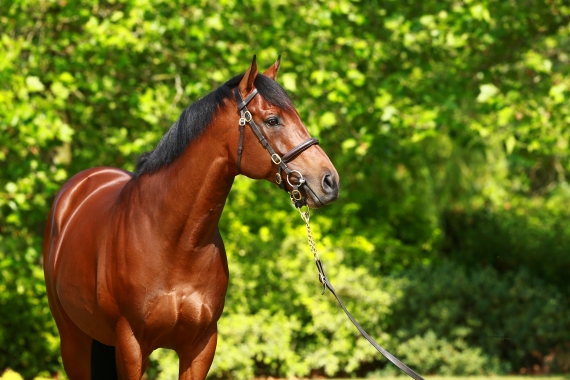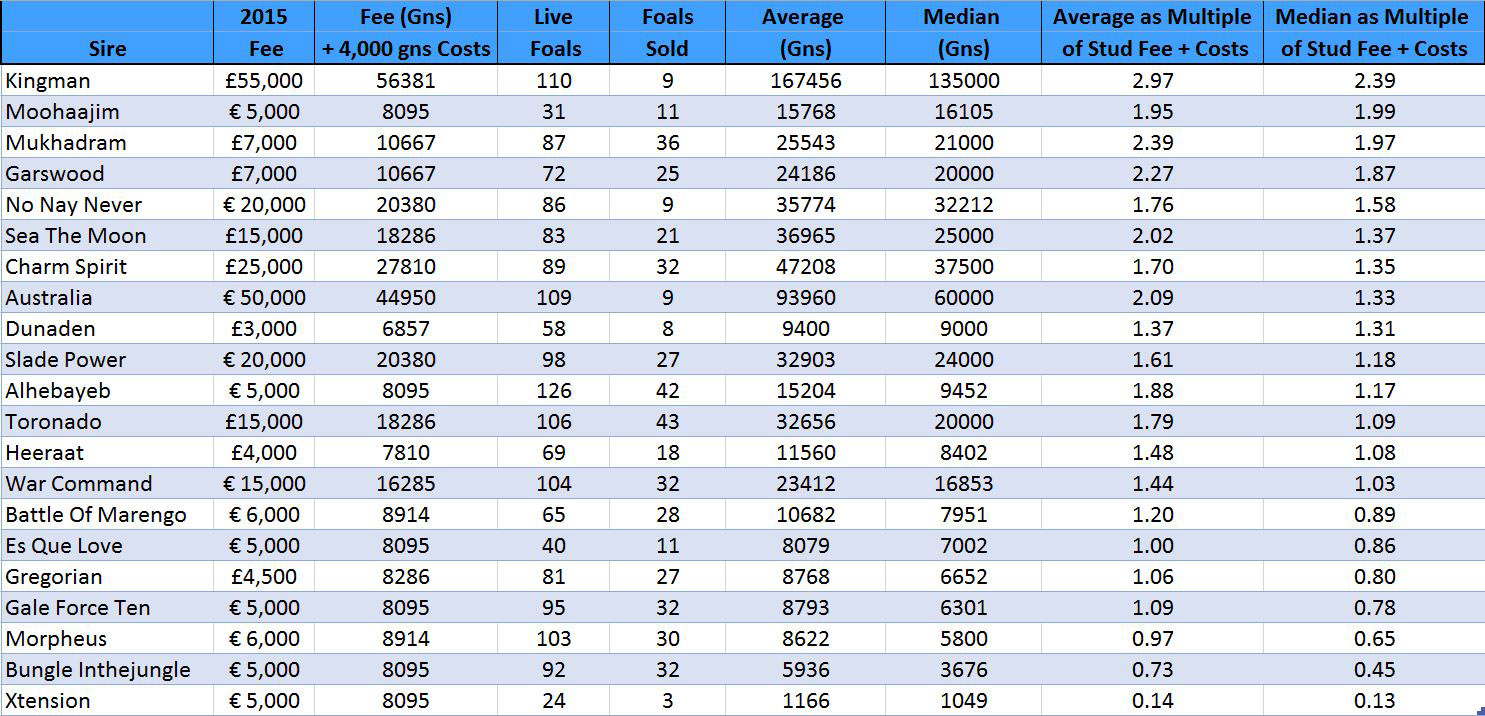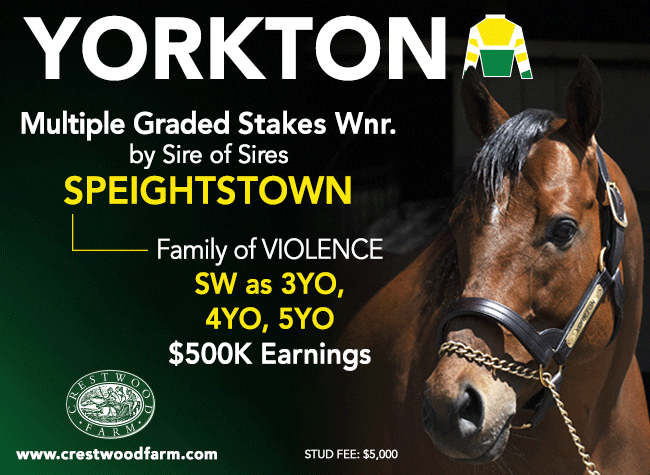By Kevin Blake
Many would argue that there is no greater challenge in the world of bloodstock trading than buying foals to resell them as yearlings. Not only do such buyers have to assess the likely physical progress of what are very young and immature animals, they also have to speculate as to what the notoriously-fickle market will want by the time the yearling sales come around less than a year later.
Yet, the challenge that the pursuit presents doesn't deter an army of pinhookers descending on the foal sales every November and December with the dream of striking gold at the yearling sales with one or more of their purchases.
One segment of the foal market that is always a hot topic of discussion at the sales is that of the first foals by new stallions. While it might seem illogical to concentrate on unproven stallions given the statistically low success rate of new sires, trying to identify the next boom stallion is a highly popular pursuit in the bloodstock world. Furthermore, those pinhookers that purchase foals from the first crop of new stallions often consider themselves to be safer than most, as nothing can happen on the racecourse in between the time of their purchase to the time of their sale to devalue that sire's stock.
How the pinhookers and other buyers have assessed the first foals of new sires is best judged on the foal sale results, and the information drawn from this data can be very useful for both breeders and traders moving forward. That said, analysing the results of foal sales is a tricky game, primarily due to sample-size issues. This is particularly true in the case of the more expensive stallions, as a general rule is that the higher the nomination fee, the fewer foals by that sire that will be offered at the foal sales. However, such analysis can be particularly informative in the case of sires who stand at the lower end of the nomination scale and are represented by a more significant sample of foals at the sales.
With talk of overproduction having returned to the industry of late, particularly so after the most recent foal sales, it is very interesting to note that the 2016 foal sales saw an increase in representatives of first-season sires. Bearing in mind that the 2015 foal sales saw the progeny of nine new sires with 75 or more foals, eyebrows will justifiably be raised that at least 14 new sires (which could potentially rise to as many of 17 pending late registrations) had over 75 foals on the ground in 2016.
As anyone that is familiar with my style of sale analysis will know, I feel that when assessing the average and median sale price statistics of a stallion's progeny it is important to add in the sire's nomination fee as well as fixed production costs into the equation. Using this method serves to level the playing field on which traditional average/median prices are skewed in favour of stallions that stood at lower nomination fees.
Calculating a fair figure for fixed costs incurred from the birth of the foal up until sale time is a tricky business. While foal registration/levy and sale entries are the same for all, the keep costs involved for a hobby or small breeder will be lower compared to those of a breeder whose mare and her progeny reside full-time at an expensive boarding stud. Thus, finding a one-size-fits-all figure that is a fair reflection of the industry average will never be straightforward, but based on feedback from last year's analysis, the figure that will be used this year is 4,000gns.
The following list is of the relevant numbers relating to every stallion based in Great Britain and Ireland that had their first live foals on the ground in 2016 based on data provided by Weatherbys. While these numbers are accurate up to the beginning of January, some of the mares covered by the sires in questions have not had a return made by their breeder yet. There tend to be live foals amongst those no returns that have yet to be registered with Weatherbys, so it is reasonable to expect these live foal numbers to rise slightly between now and the yearling sales.
In common with the difficulties of deciding on a fixed-cost figure that is fair to all, choosing what Euro/Sterling exchange rate to use is also a challenge given that some stud fees are paid as early as Oct. 1 after the mare is covered, whilst others may not be paid until the summer months after the foal is born. In an effort to find a fair mid-point, an exchange rate of 78p to €1 from Mar. 1 2016 has been used. Given the impact of Brexit and the consequent weakening of Sterling to 85p to €1 at the time of the foal sales, Irish-based stallions were favoured, and thus the exploits of British-based stallions can be slightly upgraded.
Depicted in the table below is what the data tells us, with the sires being put in order of the highest “Median as a multiple of stud fee + costs” statistic.
Given the aforementioned disadvantage that British-based stallions faced in this analysis owing to exchange rate fluctuations, it is notable that the two sires that come out best at the figures amongst those that had 20 or more foals that changed hands in the ring were Mukhadram (Shadwell) and Garswood (Cheveley Park).
Mukhadram is a son of Shamardal that was admirably consistent at Group 1 level as a 4- and 5-year-old, registering his sole success at that level when running out the surprise winner of the Coral-Eclipse at Sandown in 2014.
While he may not have had the sexiest of profiles as a racehorse, he was the highest-rated son of Shamardal to retire to stud with his career-high official rating of 125 being superior to anything achieved by Lope De Vega or Casamento. That fact, coupled with good looks that helped him realise 190,000gns as a foal, made him a popular choice for breeders at his opening fee of £7,000.
It is notable that Shadwell have been keen to support him at the sales. Indeed, they signed for three of the six highest-priced foals by Mukhadram including the most expensive one, a colt out of My Inspiration that realised 120,000gns at Tattersalls. That colt is from an old Shadwell family that produced Lahib amongst others and was the first foal out of an Invincible Spirit mare that cost his breeders just 32,000gns when carrying him the previous year.
Outside that headline lot, there was a good spread of support for Mukhadram's progeny at a higher level than one would expect given the fee he stood at, and his numbers read well against his peers. It certainly represents a very positive start for him and his yearlings will be eagerly anticipated. His covering fee has remained unchanged at £7,000 since his first season.
Garswood has what is probably fair to describe as a more commercial profile. He was bred by Cheveley Park Stud and is a son of Dutch Art from a family that they have nurtured and developed for many generations. While Cheveley Park may have chosen to sell Garswood as a foal for 19,000gns, they wisely bought back into him after his 2-year-old campaign that yielded a win in listed company and a close second in a Group 3. That proved to be good business, as while he didn't stay a mile, he dropped back in trip and found improvement as both a 3- and 4-year-old, culminating in his first Group 1 win in what would prove to be the final start of his career in the Prix Maurice de Gheest at Deauville.
Returned to Cheveley Park for stud duties, he stood for £7,000 in his first season and attracted solid support from breeders. More significantly, the foals that resulted from those initial matings did very nicely at the foal sales. Their median and average prices stand up very well and they attracted some notable buyers, with his two highest-priced colts being bought by Shadwell and Yeomanstown.
With Garswood having had his covering fee dropped to £4,000 for 2017, there are likely to be plenty of breeders willing to take a chance on him based on the strength of the performance of his first foals at the sales.
While plenty of the higher-priced stallions will be much better judged when the bulk of their offspring appear at the yearling sales, one more modestly priced sire that wasn't overly well supported in his first season but warrants a mention based on how his first foals fared at the sales is Moohaajim (Rathbarry Stud).
A son of Cape Cross that won the G2 Mill Reef S. and was only just touched off in the Middle Park S. as a juvenile, he never raced again after disappointing behind Dawn Approach in the 2000 Guineas. While he wasn't one of the more high-profile retirees in 2015, it was still surprising that he didn't attract more mares than he did, with just 31 live foals by him having been registered by early January. However, those that did support him reaped some solid rewards at the foal sales.
The stand-out performer was Rathbarry's colt out of Bahati that realised €56,000 at Goffs, but with six of the remaining 10 foals by him that were sold all realising at least €20,000, his figures read well against his peers. Of course, with just 11 foals sold, these figures could well be misleading, but Moohaajim is definitely one to keep an eye on later this year.
Not a subscriber? Click here to sign up for the daily PDF or alerts.







